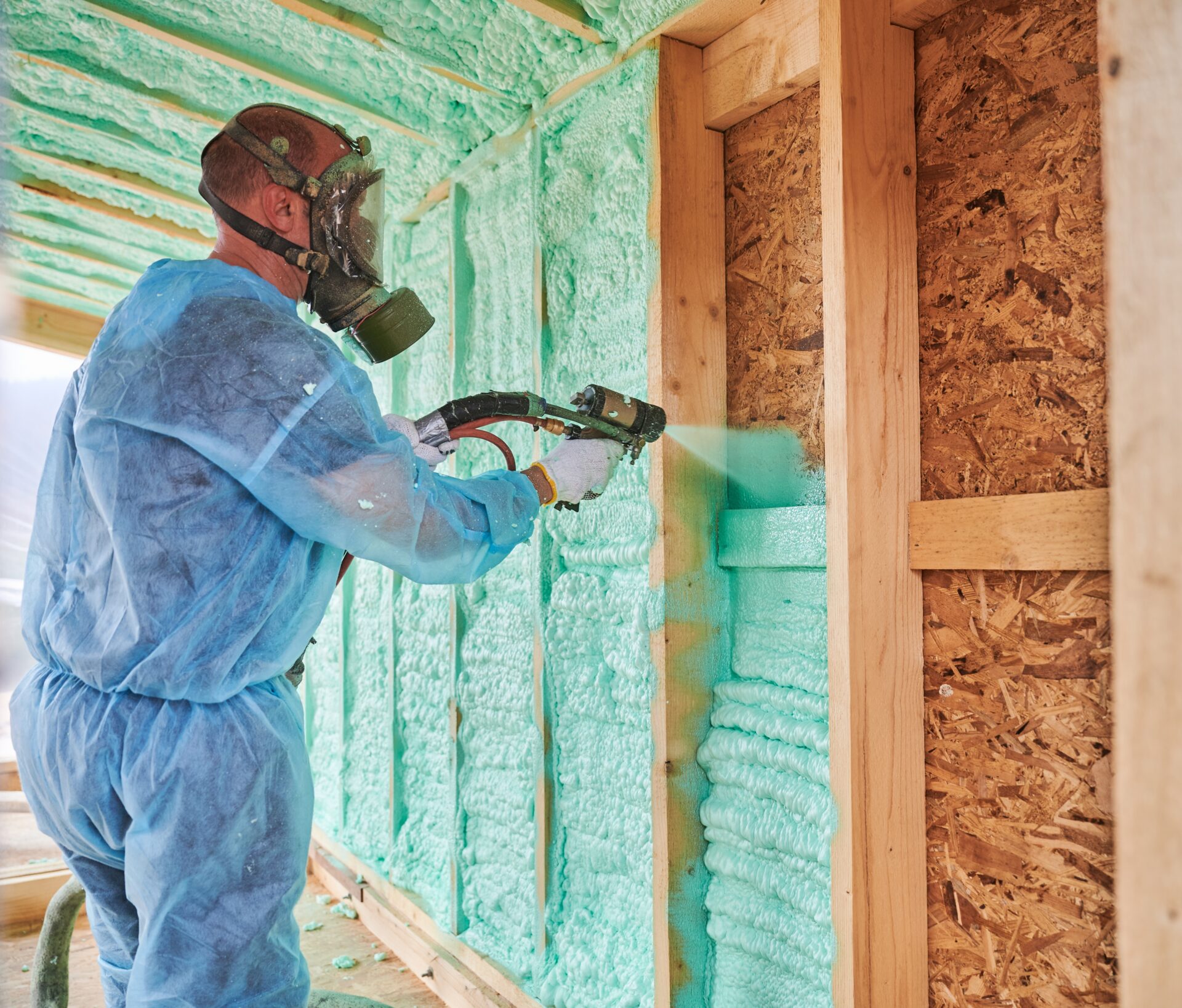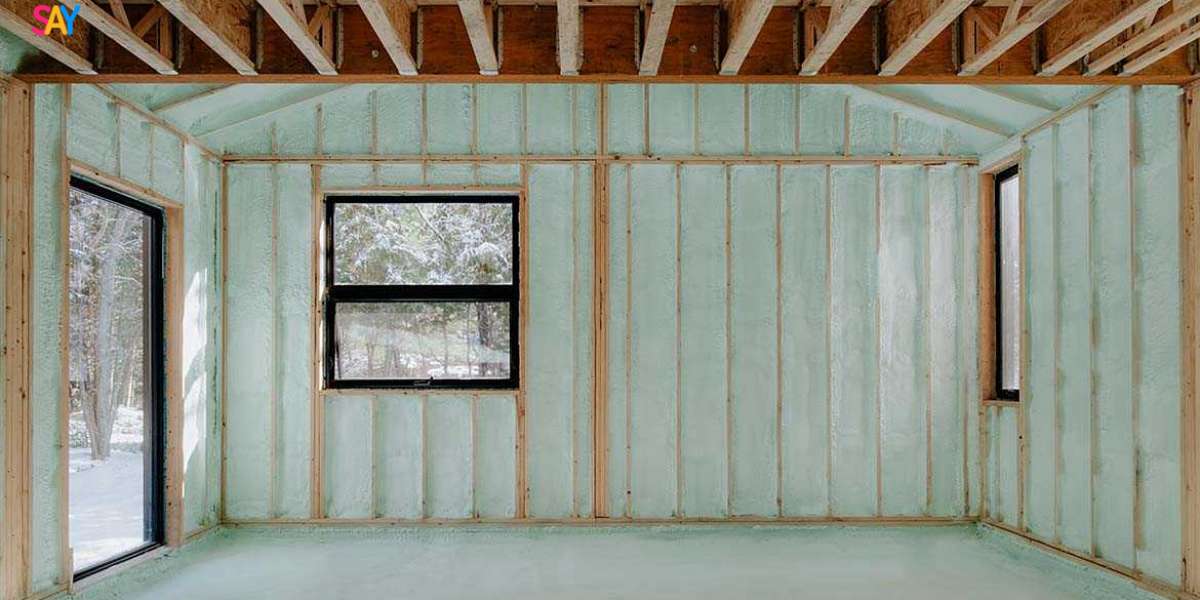Spray foam insulation helps minimize unexpected changes orders in new construction projects by addressing key building performance challenges with a single solution. Projects utilizing spray foam report significantly fewer post-construction changes related to thermal comfort, air leakage, and moisture problems compared to those using conventional insulation. This is because spray foam delivers an integrated building envelope system that performs consistently from the outset, preventing the types of oversights that often require adjustments later in the construction process.
By delivering thermal insulation, air sealing, vapor control, and structural support in one material, spray foam reduces the risk of later-stage surprises during inspections or occupancy, eliminating the root causes of many unplanned modifications.

Common Change Orders Prevented by Spray Foam
Unexpected changes in construction frequently stem from insulation-related performance issues. Spray foam mitigates the factors behind these common issues early in the build process, helping teams stay on track.
Thermal Performance Change Orders
Conventional insulation often underperforms due to installation errors, material gaps, or settling. These issues commonly require corrections like added insulation or HVAC changes.
Spray foam delivers uniform coverage, eliminating gaps and reducing thermal bridging. This ensures the building envelope performs to design expectations from the start.
Comparison of Change Order Frequency and Root Causes
Change Order Type | With Conventional Insulation | With Spray Foam | Root Cause Addressed |
Additional Air Sealing | High | Low | Full air barrier coverage |
HVAC Resizing | Frequent | Rare | Stable thermal envelope |
Cold Room Remediation | Common | Minimal | Elimination of voids |
Comfort Balancing | Often | Rare | Even temperature control |
Moisture Management Change Orders
Multiple material layers are required in traditional systems to manage moisture. If one fails, change orders can follow.
Spray foam, particularly closed-cell, combines moisture resistance and air sealing in a single application. This prevents issues like condensation buildup and mold—frequent causes of post-construction changes.
Moisture Management Consideration Table
Area of Concern | Spray Foam Benefit | Typical Result |
Rim Joists | Integrated moisture and air control | Fewer envelope issues |
Crawl Spaces | Vapor-resistant insulation | Reduced remedial work |
Roof Assemblies | Continuous barrier at complex angles | Moisture intrusion prevention |
Tip: Prioritize closed-cell spray foam in moisture-sensitive areas to further lower the chance of envelope-related surprises.

HVAC-Related Change Orders
When insulation performance is inconsistent, HVAC systems are often resized or adjusted post-installation.
Spray foam enables more accurate HVAC planning by delivering consistent R-values and air sealing. This reduces reliance on built-in "safety margins" and ensures right-sized equipment performs as expected from day one.
Technical Performance Specifications
Spray foam's multifunctional performance makes it especially effective at preventing change orders related to the building envelope.
Performance Attribute | Closed-Cell Spray Foam | Open-Cell Spray Foam | Fiberglass Batts | Cellulose |
R-Value Per Inch | 6.0–7.0 | 3.5–3.8 | 2.9–3.8 | 3.2–3.8 |
Air Barrier Capability | Full at 1.5" | Full at 3.5" | None | None |
Vapor Permeance | 0.8–1.5 perms | 10+ perms | 40+ perms | 5–10 perms |
Installation Consistency | Very High | High | Moderate | Moderate |
Thermal Bridging Mitigation | Excellent | Good | Poor | Fair |
Structural Contribution | Strong | Moderate | None | None |
Change Order Reduction by Construction Phase
Spray foam helps mitigate unplanned changes throughout the build process, particularly during key stages like pre-drywall and post-completion.
Pre-Drywall Phase Benefits
Early installation of spray foam avoids several issues that commonly emerge after drywall is installed.
- Simplified Air Barrier: Spray foam forms a single, continuous barrier, reducing the need for multiple trades and coordination.
- Fewer Trade Conflicts: Reduces overlap and scheduling delays, minimizing coordination-related change orders.
- Improved Quality Control: Clear visual coverage makes inspection easier and more reliable.
Tip: Schedule blower door testing after spray foam installation and before drywall. This helps verify air sealing effectiveness and reduces performance-related changes later.
Post-Completion Phase Benefits
After occupants move in, performance issues with conventional insulation often lead to callbacks and change orders.
- Stable Comfort: Spray foam reduces room-to-room temperature variance, limiting occupant complaints.
- Moisture Problem Prevention: With fewer penetrations and better sealing, the risk of mold and water damage diminishes.
- Lower Warranty Claims: Homes with spray foam see far fewer building envelope-related issues in the first year of occupancy.
Key Factors to Evaluate Before Choosing Spray Foam
Before deciding to use spray foam primarily to avoid unexpected changes, consider these factors:
Project Complexity
Complex framing or numerous penetrations increase the chance of gaps in traditional systems. Spray foam performs best in these conditions by adapting easily to irregular shapes and details.
Performance Expectations
For high-performance homes or those targeting energy certifications, spray foam is often the most dependable solution to meet stringent envelope standards without later modification.
Construction Timeline
Spray foam replaces multiple steps in the insulation process, helping simplify the schedule. However, it requires careful timing to allow for proper application and curing.
Climate Conditions
In regions with extreme temperatures or high humidity, the all-in-one performance of spray foam reduces the likelihood of performance-related surprises after occupancy.
Budget Priorities
Rather than viewing spray foam as a line-item cost, consider its impact on other areas like air barriers, vapor control, and HVAC sizing. Integrating these benefits can free up resources elsewhere in the project.
Frequently Asked Questions
How does spray foam affect HVAC planning?
It allows for smaller, more precise HVAC systems. This prevents last-minute changes due to over- or under-performing insulation.
Can spray foam reduce the need for structural corrections?
Yes. Closed-cell spray foam increases the racking strength of framed walls, reducing movement or settling that may otherwise lead to structural or cosmetic repairs.
What about sound performance?
Spray foam improves acoustics, especially in multi-family and high-end residential projects. Open-cell foam in interior walls can limit noise transfer and reduce related change orders.
What documentation helps validate performance?
Thermal imaging and blower door testing after installation provide solid documentation. This helps establish clear performance baselines and supports resistance to unjustified post-build changes.
Final Thoughts
Spray foam insulation can play a major role in preventing unexpected change orders in new construction by addressing the primary causes of envelope-related issues early in the process. Its combined benefits—thermal regulation, moisture resistance, air sealing, and even structural reinforcement—enable a smoother path from design to occupancy.
By selecting spray foam as part of a larger performance-focused strategy, builders and project managers can reduce surprises, minimize disruptions, and ensure long-term satisfaction with the finished structure.
Reviewer:
Grace Walker has been in the spray foam industry for 9 years and provided input to refine this article’s focus on performance value and practical decision-making in construction.




